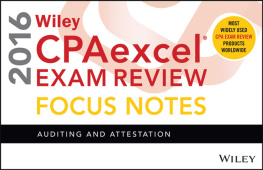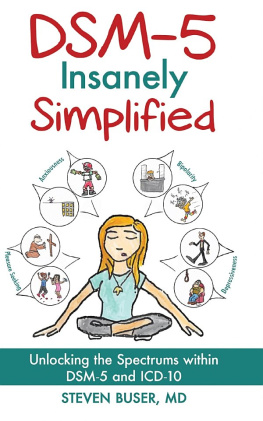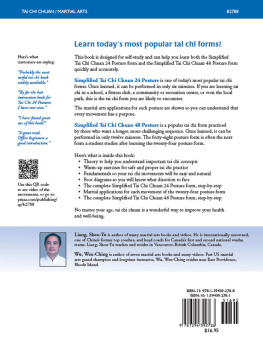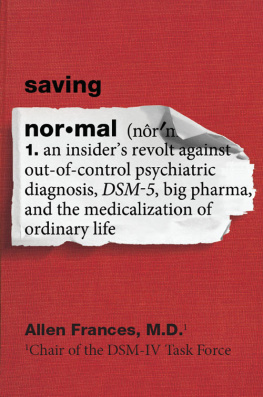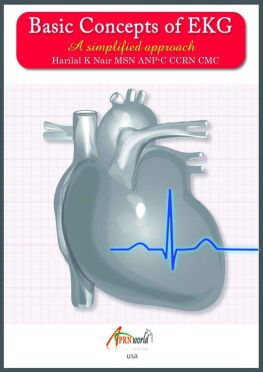2014 by Chiron Publications. All rights reserved. No part of this publication may be reproduced, stored in a retrieval system, or transmitted, in any form by any means, electronic, mechanical, photocopying, recording, or otherwise, without the prior written permission of the publisher, Chiron Publications, 932 Hendersonville Road, Suite 104, Asheville, North Carolina 28803.
www.ChironPublicatons.com
innerQuest is a book imprint of Chiron Publications
Buser, Steven, 1963- , author.
DSM-5 insanely simplied : unlocking the spectrums within DSM-5 & ICD 10 / Steven Buser, Leonard Cruz.
p. ; cm.
Includes bibliographical references and index.
ISBN 978-1-63051-207-1 (pbk. : alk. paper) -- ISBN 978-1-63051-208-8 (clothbound : alk. paper) -- ISBN 978-1-63051-209-5 (electronic)
I. Cruz, Leonard, 1957- , author. II. Title.
[DNLM: 1. Diagnostic and statistical manual of mental disorders. 5th ed. 2. International statistical classication of diseases and related health problems. 10th revision. 3. Mental Disorders--classification--Handbooks. 4. Mental Disorders--diagnosis--Handbooks. WM 34]
DSM-5 SUMMARY PAGES
WARNING! The description of DSM-5 disorders that follows are in a highly simplified and summarized form. They are meant to give a quick overview and a reminder of the disorder. They do not, however, include all of the full diagnostic criterion found in the complete DSM-5 text. The DSM-5 should be purchased as a separate side-by-side text. Please do not use our book to formally reach a diagnosis, but rather as a quick reference and memory tool. All codes begin with DSM-5 and following the backslash include ICD-10 codes. Most of which begin with the letter F
DEPRESSIVE DISORDERS
Major Depressive Disorder
5 SIG E CAPSS symptoms for at least 2 weeks [Sadness, Interest loss, Guilt or worthlessness, Energy loss, Concentration loss, Appetite change, Psychomotor agitation or retardation, Sleep change, Suicidal thoughts]
296.2x / F32.x Major Depressive Disorder, single episode
296.3x / F33.x Major Depressive Disorder, recurrent
| Intensity: | Single Episode: | Recurrent Episode: |
| Mild | 296.21 / F32.0 | 296.31 / F33.0 |
| Moderate | 296.22 / F32.1 | 296.32 / F33.1 |
| Severe | 296.23 / F32.2 | 296.33 / F33.2 |
| Psychotic | 296.24 / F32.3 | 296.34 / F33.3 |
300.4 / F34.1 Persistent Depressive Disorder (Dysthymia)
Sad most days for 2 years
2 or more of: sleep change, hopelessness, appetite change, low self-esteem, concentration loss
Never 2 months symptom free in first 2 years
Significant distress or impairment
296.99 / F34.8 Disruptive Mood Dysregulation Disorder
Severe recurrent temper outbursts (verbal or physical)
Out of proportion to context
3 or more per week; persists more than a year; began as child (6-18)
Persistent irritability
(not better explained by mania, depression, autism, substance abuse, etc)
625.4 / N94.3 Premenstrual Dysphoric Disorder
Symptoms present one week prior to menses
At least 1 of the 4 following: mood swings, irritability/anger, sadness, anxiety/tension
At least 5 total: mood swings, irritability/anger, sadness, anxiety/tension, loss of interest, poor concentration, fatigue, appetite change, sleep change, overwhelmed, physical symptoms (breast tenderness, bloating, pain, weight gain)
Significant distress or impairment
BIPOLAR DISORDERS
296.7 / F31.9 Bipolar I Disorder
Euphoric or irritable mood and increased energy or activity for 1 week
3 out of 7: grandiose, decreased sleep, talkative, racing thoughts, distractibility, increased goal-directed activity, impulsive)
Social or work impairment
296.89 / F31.81 Bipolar II Disorder
At least 1 Hypomanic episode and at least 1 Major Depressive episode
No full Manic episodes
Hypomanic Episode:
Same as Bipolar I Manic episode except: at least 4 days duration (instead of 7)
And NO marked impairment in social or occupational functioning
301.13 / F34.0 Cyclothymic Disorder
Numerous hypomania and depression symptoms for most of the time for 2 years
Never reaches full diagnosis for either hypomanic, manic or depressive episodes
Not without symptoms for 2 months in 1st 2 years.
Clinically significant distress or impairment
May Add Specifiers:
with Anxious Distress
with Mixed Features (mania and depression)
with Rapid Cycling (for Bipolar I and II: > 4 episodes per year)
with Melancholic Features (loss of pleasure, lack of reactivity, despair, worse in a.m., early morning awakening)
with Atypical Features (weight gain, increased sleep, leaden paralysis, interpersonal rejection sensitivity, mood reactivity)
with Psychotic Features, with Catatonia, with Peripartum Onset, with Seasonal Pattern
PSYCHOTIC DISORDERS
295.90 / F20.9 Schizophrenia
Must have 1 positive symptom (hallucinations, delusions or disorganized speech) for 1 month
2 of the following: hallucinations, delusions, disorganized speech, disorganized behavior, or negative symptoms (low emotion, low motivation)
Prior or residual poor functioning for at least 6 months
Social or work impairment
295.40 / F20.81 Schizophreniform Disorder
Schizophrenic symptoms between 1-6 months duration
295.70 / F25.0 Schizoaffective Disorder, Bipolar type
Schizophrenic symptoms and Bipolar I symptoms present most of the time.
At least 2 weeks of delusions or hallucinations without Bipolar symptoms
Must have Bipolar symptoms for the majority of time.
295.70 / F25.1 Schizoaffective Disorder, Depressive type
Schizophrenic symptoms and Depression symptoms present most of the time.
At least 2 weeks of delusions or hallucinations without Depression symptoms
Must have Depression symptoms for the majority of time.
297.1 / F22 Delusional Disorder
Moderate delusions at least 1 month, not Schizophrenic level
Otherwise good functioning; no bizarre behavior
Erotomanic type
Grandiose type
Jealous type
Persecutory type
Somatic type
Mixed type
Unspecified type
298.8 / F23 Brief Psychotic Disorder
Schizophrenic symptoms for less than 1 month
Full return to premorbid level.
with marked stressors
without marked stressors
with postpartum onset
with Catatonia
ANXIETY DISORDERS
300.01 / F41.0 Panic Disorder
Recurrent, abrupt, unexpected intense fear or discomfort
Persistent worry of additional attacks for 1 month
4 out of 13 symptoms: (palpitations, sweating, trembling, shortness of breath, choking, chest pain, nausea, dizziness, derealization, fear of going crazy, fear of dying, numbness/tingling, hot/cold flashes)
Panic Attack can also be a specifier for other diagnoses (i.e. PTSD with Panic Attacks)
300.22 / F40.00 Agoraphobia
Intense fear of 2 or more of: public transportation, open spaces (markets, bridges), enclosed spaced (theaters, shops), crowds, being away from home.


